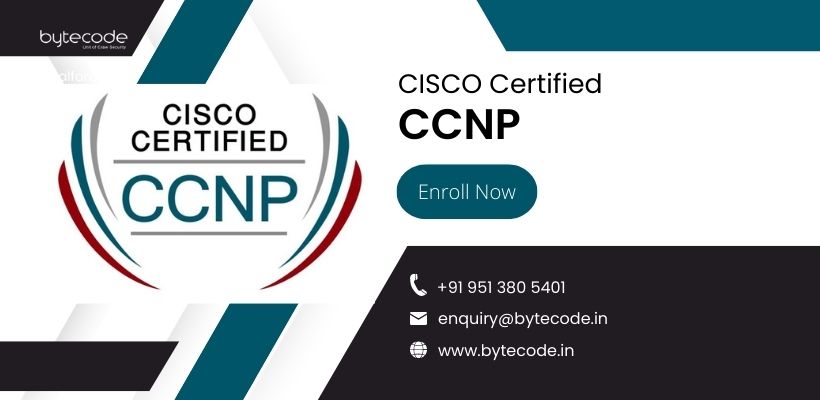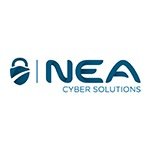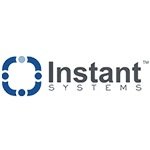CCNP Security Training Course
The CCNP Security Training and Certification Course is aligned specifically to the job role of the Cisco Network Security Engineer responsible for Security in Routers, Switches, firewalls, and IPs, as well as choosing, deploying, supporting, and troubleshooting firewalls. With the substantial increase in cybercrime attacks, security specialists today are in greater demand than ever. Companies are looking for protection of their assets, and many of these companies have looked to Cisco to provide this protection due to Cisco’s renowned high-quality products and services in today’s market.

Achieving the CCNP Security Training and Certification Course proves your skills with security solutions. To earn CCNP Security Training certification, you pass two exams: one that covers core security technologies and one security concentration exam of your choice, so you can customize your certification to your technical area of focus.
Students can attend classes from their homes. It takes less time to attend an online class. At the same time, various groups can attend online classes with bytecode Cyber Security From home.
CCNP 350-701 Course Modules
Module 01: Cisco ASA Overview
1.1 Firewall Overview
1.2 Firewall Techniques
1.3 Stateless Packet Filtering
1.4 Stateful Packet Filtering
1.5 Cisco ASA Product Family
1.6 Introducing the Cisco ASA 5500-X Series NGFW
1.7 Introducing the Cisco ASAv
1.8 Difference between UTM and NGFW
1.9 Cisco ASA Features
1.10 Using the CLI
1.11 Using the Cisco ASDM
1.12 Understanding Factory default configuration
1.13 Working on the configuration files
1.14 Cisco ASA Firewall Interfaces
1.15 Configuring Physical interfaces
1.16 Configuring Vlan interfaces
1.17 Redundant Interface
1.18 Configuring Interface Security Parameters
1.19 Naming the interface
1.20 Security Level
1.21 Assigning the IP Address
1.22 Cisco ASA IP Connectivity
1.23 Configuring the Static Routing
1.24 Routing with EIGRP
1.25 Routing with OSPF
1.26 Routing with BGP
1.27 Verifying the Routing Table
1.28 Configuring the SSH and Telnet
1.29 Configuring HTTP/S
1.30 Cisco ASA NAT (Network Address Translation)
1.31 Understanding the NAT
1.32 Methods of NAT
1.33 Inside NAT
1.34 Outside NAT
1.35 Implementation of NAT
1.36 Auto NAT
1.37 Manual NAT
1.38 Types of NAT
1.39 Static
1.40 NAT
1.41 PAT
1.42 Dynamic
1.43 NAT
1.44 PAT
1.45 Twice NAT
1.46 Identity NAT
1.47 Cisco ASA ACL
1.48 Inside/ Outside ACL.
1.49 Object GROUP ACL.
1.50 Life of a Packet on the Cisco
1.51 Cisco ASA Modes
1.52 Transparent Mode
1.53 Routed Mode
1.54 Cisco ASA Context
1.55 Admin Context
1.56 System Context
1.57 User Context
1.58 Deployment Guide
1.59 Cisco High Availability
1.60 ASA Failover
1.61 Active/Standby
1.62 Active/Active
1.63 Verifying failover Operations
1.64 Clustering ASA firewallWireshark Capture
Module 02: Cryptography Overview
2.1 Hash Algorithm
2.2 Encryption Overview
2.3 Cryptanalysis
2.4 Symmetric Encryption Algorithm
2.5 Asymmetric Encryption Algorithm
2.6 Digital Signatures
2.7 PKI Overview
2.8 PKI Operations
2.9 Fundamentals of VPN Technologies and IPSec
2.10 What is VPN
2.11 Introduction of Ipsec Terminology
2.12 VPN Types
2.13 Ipsec Features
2.14 Confidentiality, Integrity, Availability and Anti-Replay.
2.15 IPSec Protocols: – IKE, ESP and AH
2.16 IKE Modes
2.17 IKE Phases
2.18 NAT-T
2.19 Security Associations and Components
2.20 How to configure cisco IOS as CA
2.21 Site to Site VPN ROUTER AND ALSO ON CISCO ASA
2.22 What is Site-to Site VPN
2.23 Wireshark Capture
2.24 GRE
2.25 Gre over IPSec
2.26 Site-to-Site VPN Labs
2.27 Deploying DMVPN
2.28 DMVPN Overview
2.29 DMVPN Terminologies
2.30 NHRP
2.31 MGRE
2.32 DMVPN Working
2.33 DMVPN Advantages and Limitations
2.34 DMVPN Phase 1, 2 and 3
2.35 DMVPN Labs
2.36 DMVPN Redundancy – Dual Hub DMVPN Deployment
2.37 Remote Access VPN
2.38 Remote Access VPN Introduction
2.39 Remote Access VPN modes
2.40 Client Mode Software
2.41 Client Mode Hardware
2.42 Remote Access with DVTI
2.43 Remote Access Working
2.44 Remote Access Labs
2.45 Deploying Clientless SSL VPN
2.46 SSL VPN Overview
2.47 SSL Handshake
2.48 SSL VPN Modes
2.49 Clientless and Thick Client
2.50 SSL VPN Working
2.51 SSL VPN Labs
2.52 Deploying Anyconnect VPN
2.53 Anyconnect Overview
2.54 Connection Policies
2.55 Group Policies
2.56 Split Tunnelling
2.57 Client Profile
2.58 Anyconnect Image Upload
2.59 GET VPN
2.60 GET VPN
2.61 GET VPN Terminologies
2.62 GDOI
2.63 Key Server (KS)
2.64 KEK (Key Encryption Key)
2.65 TEK (Traffic Encryption Key)
2.66 Rekey Process (Unicast and Multicast)
2.67 Group Member (GM)
2.68 GET VPN Lab and Working
2.69 Flex VPN
2.70 Introduction and Working IOS Flex VPN
2.71 Flex VPN Labs
Module 3: Introducing Cisco ISE Architecture and Deployment
3.1 Security challenges
3.2 Cisco ISE solutions Use Cases
3.3 Secure Access Control
3.4 ISE function
3.5 ISE deployment components
3.6 Context visibility
3.7 ISE Personas
3.8 ISE Licensing
3.9 Infrastructure Components
3.10 Identity Source
3.11 Fundamentals of AAA
3.12 AAA
3.13 Radius Overview
3.14 Radius Messages
3.15 AV Pair
3.16 IEEE 802.1x Primer
3.17 EAP
3.18 Types of EAP
3.19 Tunnel EAP
3.20 EAP-FAST
3.21 PEAP
3.22 EAP-TLS
3.23 Non-Tunnel EAP
3.24 EAP-MD5
3.25 MSCHAP
3.26 EAP GTC
3.27 Host Mode
3.28 Deployment of 802.1x
3.29 Bootstrap Network Access Devices
3.30 Radius Commands
3.31 AAA Commands
3.32 Introduction to ISE GUI
3.33 AD overview and configuration
3.34 Admin Access
3.35 Administrative Work
3.36 Certificate in ISE
3.37 Personas
3.38 Probes for ISE
3.39 Backup/Restore
3.40 Maintenance
3.41 Configuring Authentication and Authorization Policy
3.42 Dot1x Authentication and Authorization
3.43 MAB Authentication and Authorization
3.44 AP Authentication and Authorization
3.45 Device Administration
3.46 Configuring Posturing and Profiling
3.47 Posturing
3.48 Profiling of Devices
3.49 Cisco TrustSec and Its Component
3.50 SGT/SGN Tagging
3.51 Classification
3.52 Propagation
3.53 Inline
3.54 SXP
3.55 Enforcement ACL
3.56 Miscellaneous Topics
3.57 Configuring the Cisco WLC and AP via GUI and CLI
3.58 Cisco VPN Authentication
3.59 Cisco Anyconnect VPN authentication from ISE
3.60 Troubleshooting ISE
3.61 Radius Live Log
3.62 Diagnostic Validator
3.63 Logs Management
3.64 Radius Messages with Attribute Type
Module 04: Cisco NGFW
4.1 What are NGFW and UTM
4.2 Components of NGFW
4.3 Introduction of the SourceFire and Snort Rules
4.4 Cisco Acquisitions
4.5 FTD, NGIPS
4.6 Off-Box Management and On-Box Management
4.7 FMC and FDM GUI
4.8 Licensing on the FMC
4.9 Registration of FMC with FTD and NGIPS
4.10 Configuration of the Sensor Interface
4.11 Configuring NAT and Routing
Module 05: WSA/ESA
5.1 Describe the Cisco WSA
5.2 Install and verify the WSA
5.3 Deploy proxy services for the WSA
5.4 WCCP Services and Transparent Proxy
5.5 Utilize authentication with the WSA
5.6 Configure various policies for the WSA
5.7 Enforce acceptable use using the WSA
5.8 Defend against malware
5.9 Configure data security
5.10 Perform Administration and Troubleshooting of WSA’s
Module 06: Introduction to Netflow
6.1 Why we need Cisco StealthWatch
6.2 Components of StealthWatch
6.3 Advance Features of StealthWatch
6.4 Configuring the Stealthwatch Management Console
6.5 Using the Appliance Setup Tool with the SMC
6.6 Configuring the Stealthwatch Flow Collector
Course Duration
- Course Duration: 40 Hours
- Course Level: Intermediate
- Included: Training Certificate
- Language: English, Hindi
- Course Delivery: Classroom Training
- Course pdf: Click here to Download
Exams and Recommended CCNA Security Training
To earn CCNP Security Training, you must pass two exams: a core exam and a security concentration exam of your choice. And now every exam in the CCNP Security program earns an individual Specialist certification, so you get recognized for your accomplishments along the way.
- The core exam focuses on your knowledge of security infrastructure. The core exam is also the qualifying exam for CCIE Security certification. Passing the core exam will qualify candidates to schedule and take the CCIE lab within the validity of their core exam.
- Concentration exams focus on emerging and industry-specific topics. You can prepare for concentration exams by taking their corresponding Cisco training courses.
Required Core Exam
- 350-701 (SCOR) – Implementing and Operating Cisco Security Core Technologies (SCOR)
Concentration exams (choose one)
- 300-710 (SNCF) – Securing Networks with Cisco Firepower Next-Generation Firewall (SSNGFW)
Securing Networks with Cisco Firepower Next-Generation IPS (SSFIPS) - 300-715 (SISE) – Implementing and Configuring Cisco Identity Services Engine (SISE)
- 300-720 (SESA) – Securing Email with Cisco Email Security Appliance (SESA)
- 300-725 (SWSA) – Securing the Web with Cisco Web Security Appliance (SWSA)
- 300-730 (SVPN) – Implementing Secure Solutions with Virtual Private Networks (SVPN)
- 300-735 (SAUTO) – Implementing Automation for Cisco Security Solutions (SAUI)
Prerequisites
There are no formal prerequisites for CCNP Security Training, but you should have a good understanding of the exam topics before taking the exam. CCNP candidates often also have three to five years of experience implementing security solutions.
Our Students Placed in Companies
































